Fleet & DOT Compliance Guide
Complete compliance requirements for commercial motor vehicles and fleet management
Last updated: November 7, 2025
Introduction
This guide covers DOT compliance requirements for commercial motor vehicles. Whether you're a fleet manager or owner-operator, these are the basics you need to pass inspections and stay legal.
Most violations happen because drivers don't know what inspectors check. From fire extinguishers to DOT numbers, we'll walk through each requirement.
Quick Compliance Checklist
Before any inspection, make sure you have:
- Fire extinguisher: UL-rated 5 B:C minimum (10 B:C for hazmat), mounted and charged
- Warning devices: 3 reflective triangles or 6 fusees
- DOT number on both sides of truck
- Annual inspection sticker (less than 12 months old)
- Registration, insurance, permits in the cab
- Hazmat placards if you're hauling placardable quantities
- First aid kit (recommended, sometimes required)
- Current logbooks or working ELD
Fire Extinguisher Requirements
Every commercial vehicle needs a fire extinguisher. Here's what 49 CFR §393.95 requires:
Standard Vehicles
For regular trucks (not hauling hazmat):
- One extinguisher rated 5 B:C or higher, OR
- Two extinguishers each rated 4 B:C or higher
- Must be UL-listed (check the label)
- Dry chemical or CO₂ types work fine
- No water extinguishers (they freeze)
Hazmat Vehicles
For hazmat loads:
- Minimum 10 B:C rating required
- Must be compatible with what you're hauling
- Some hazard classes need higher ratings
Mounting Requirements
- Mount it securely so it doesn't bounce around
- Easy to reach (usually in the cab)
- Pressure gauge must be visible
- Protect from weather if outside
Fleet Best Practice
Most fleets use 10 lb ABC extinguishers. They exceed the minimum and handle most fire types. Check pressure monthly—a low gauge means you'll fail inspection. See NFPA 10 for service requirements.
Emergency Equipment
Besides fire extinguishers, you need warning devices for breakdowns:
Warning Devices
Pick one option:
- Three reflective triangles (most common), OR
- Six fusees or three liquid flares
Note: Can't use flares if you're hauling explosives or flammable cargo. Triangles are safer and work in all weather.
First Aid Kits
Not federally required but many carriers mandate them. OSHA requires them if you have employees.
Basic kit should have bandages, gauze, tape, antiseptic, and gloves. Check expiration dates.
Hazmat Equipment
For hazmat loads, you also need:
- Spill cleanup kit matched to what you're hauling
- Absorbent materials
- Personal protective equipment (PPE)
- Emergency response guidebook
- Shipping papers with emergency contacts
Vehicle Marking & Placarding
DOT Number Display
Per 49 CFR §390.21:
- Both sides of the truck
- At least 2 inches tall
- Contrasting color from the truck
- Format: "USDOT 1234567"
- Readable from 50 feet away
- Permanent (decals or paint, not magnetic signs)
Company Information
- Your legal business name on both sides
- City and state where you're based
- Can combine it with the DOT number
- Same size and visibility rules as DOT number
Hazmat Placards
When hauling hazardous materials:
- Required when hauling placardable quantities
- Diamond shape, at least 10.8 inches per side
- All four sides of truck/trailer
- Match the hazard class of what you're carrying
- Four-digit UN number for some loads
- Remove or cover them when empty
All safety signage should meet ISO 7010 standards for clear communication.
Inspection & Maintenance Schedule
Here's what you need to check and when:
| Inspection Type | Frequency | Key Items |
|---|---|---|
| Pre-Trip | Before each trip | Lights, tires, brakes, fire extinguisher charge, leaks |
| Post-Trip | After each trip | Damage documentation, DVIR completion |
| Monthly Safety Check | Monthly | Fire extinguisher gauge, emergency equipment, documentation |
| Annual DOT Inspection | 12 months | Full vehicle inspection per 49 CFR §396.17 |
| Fire Extinguisher Service | 12 months | Weight check, discharge test, inspection tag update |
Fire Extinguisher Maintenance
Per NFPA 10:
- Monthly: Look at the gauge, check for damage, make sure it's still mounted
- Every year: Get it inspected by a certified tech
- Every 6 years: Internal exam for stored pressure types
- Every 12 years: Hydrostatic test for dry chemical units
- Right away: Replace if the gauge is low or it's damaged
- Keep records: Save all inspection tags and service paperwork
Documentation Requirements
Keep these documents ready for inspections:
Vehicle Documents
Must be in the truck:
- Current vehicle registration
- Proof of insurance
- Annual inspection certificate
- IFTA credentials (interstate fuel tax)
- Overweight/oversize permits (if needed)
- Hazmat shipping papers (if hauling hazmat)
Driver Documentation
- Valid CDL
- Medical certificate (DOT physical)
- Hours of service logs (paper or ELD)
- Driver qualification file (your carrier keeps this)
- Hazmat endorsement (if needed)
- TWIC card (for ports)
Maintenance Records
- Annual inspection reports (keep for 14 months)
- Fire extinguisher service records
- Driver vehicle inspection reports (DVIR)
- Repair and maintenance logs
- Pre-trip/post-trip checklists
- Equipment certification papers
Common Violations & How to Avoid Them
These are the violations inspectors catch most often:
| Violation | Points | How to Prevent |
|---|---|---|
| Fire extinguisher missing or empty | 4 points | Check the gauge monthly, mount it securely |
| No warning devices | 2 points | Keep triangles in the cab, check during pre-trip |
| DOT number wrong size or faded | 1 point | Make sure it is 2 inches tall and easy to read |
| Expired annual inspection | 4 points | Track expiration dates, schedule 30 days early |
| Missing or wrong placards | 3-10 points | Match placards to your shipping papers, all 4 sides |
Out-of-Service Violations
These violations mean you can't drive until fixed:
- Fire extinguisher completely missing
- Brake problems that meet out-of-service criteria
- Hazmat violations that create immediate danger
- Hours of service violations past the limit
- Missing or expired medical certificate
State-Specific Requirements
Federal DOT rules are the baseline, but some states add their own:
California
- BIT inspection program
- Stricter exhaust smoke limits than federal
- Extra permits for hazmat on certain routes
- CalOSHA rules if you have employees
New York
- Enhanced inspection program for some fleets
- Special permits for high-quantity hazmat
- Extra paperwork for overweight permits
- Tire chains required in winter on some roads
Texas
- State-specific registration and permits
- Oversized load rules change by route
- Weight stations work differently
- Texas environmental rules for hazmat
Interstate Operations
When you cross state lines, you need to follow federal rules plus the strictest state rules you'll hit. Check each state's requirements before you go.
DOT Compliance Products (5)
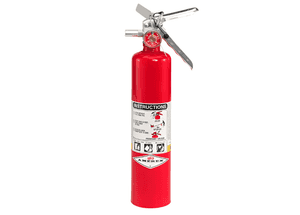
Buckeye ABC Dry Chemical Fire Extinguisher w/ Vehicle Bracket – 2.5 lb.
$46.00
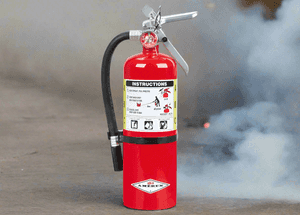
Buckeye ABC Dry Chemical Fire Extinguisher w/ Vehicle Bracket – 5 lb.
$58.00
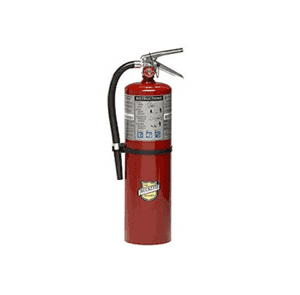
Buckeye ABC Dry Chemical Fire Extinguisher w/ Wall Hook – 10 lb.
$84.00
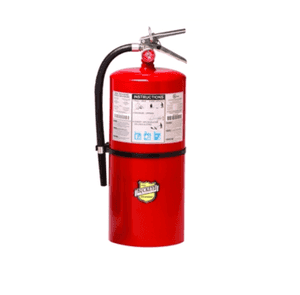
Buckeye ABC Dry Chemical Fire Extinguisher w/ Wall Hook – 20 lb.
$155.00
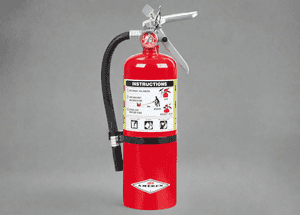
Buckeye ABC Dry Chemical Fire Extinguisher w/ Wall Hook – 5 lb.
$55.00
Was this resource helpful?
Your feedback helps us improve our technical resources and guides.